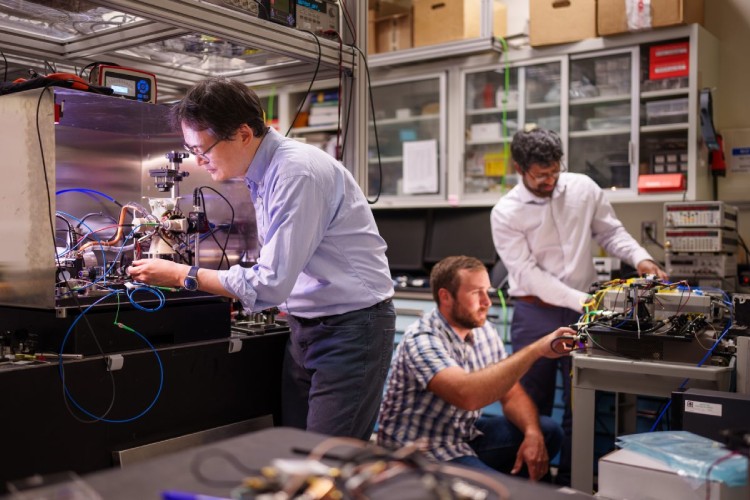
The story so far - Researchers at Sandia National Laboratories in the US have performed an ultra-precise acceleration measurement for the first time using silicon photonic microchip components called Atom Interferometry, a quantum sensing approach. This represents the most recent advancement in creating a quantum compass that can be used for navigation without GPS signals.
The research team presented their study and revealed a brand-new, high-performance silicon photonic modulator that controls light on a microchip.
Sandia Scientist Jongmin Lee stated, “By harnessing the principles of quantum mechanics, these advanced sensors provide unparalleled accuracy in measuring acceleration and angular velocity, enabling precise navigation even in GPS-denied areas.”
The research faced two major challenges. First, an atom interferometer is usually a room-sized sensor system. To be more exact, a quantum inertial measurement unit, or full quantum compass, would require six atom interferometers. However, Lee and his group have been able to lessen the device's size, weight, and power requirements.
The new modulator serves as the focal point of the microchip laser system. Robust enough to withstand strong vibrations, it would take the place of a traditional laser system, which is usually the size of a refrigerator.
The Sandia team used four modulators to change the frequency of a single laser so that it could carry out various tasks in an atom interferometer. But sidebands, or undesired echoes, are frequently produced by modulators and must be reduced. With the help of Sandia's suppressed-carrier, single-sideband modulator, these sidebands are reduced by an astounding 47.8 dB or almost 100,000 times.
Second, cost has been a significant barrier to the deployment of quantum navigation systems. Each atom interferometer requires a laser system, and each laser system requires modulators. The cost of a single full-size, commercially available single-sideband modulator is more than USD 10,000.
The researchers in SNL reduced the costs by shrinking large, costly components into silicon photonic chips. Sandia scientist Ashok Kodigala stated, “We can make hundreds of modulators on a single 8-inch wafer and even more on a 12-inch wafer.”
The researchers are investigating applications outside of navigation as the technology approaches field implementation. They envisage applications for the optical components they invented in quantum computers, optical communications, and LIDAR, including the modulator.

